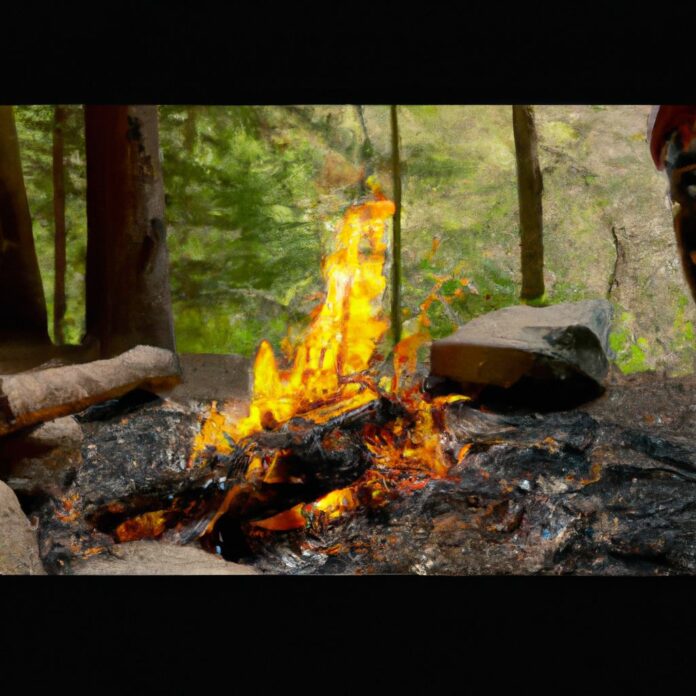Camping is an exciting outdoor adventure that allows you to disconnect from the hustle and bustle of everyday life and immerse yourself in nature. However, to make the most out of your camping experience, it is essential to have certain skills and knowledge. This article will guide you through the essential camping skills that will ensure a successful and enjoyable outdoor adventure.
Essential camping skills for an outdoor adventure
By developing these essential camping skills, you will be well-prepared to embark on outdoor adventures and create lasting memories in the wilderness.
Building a Campsite
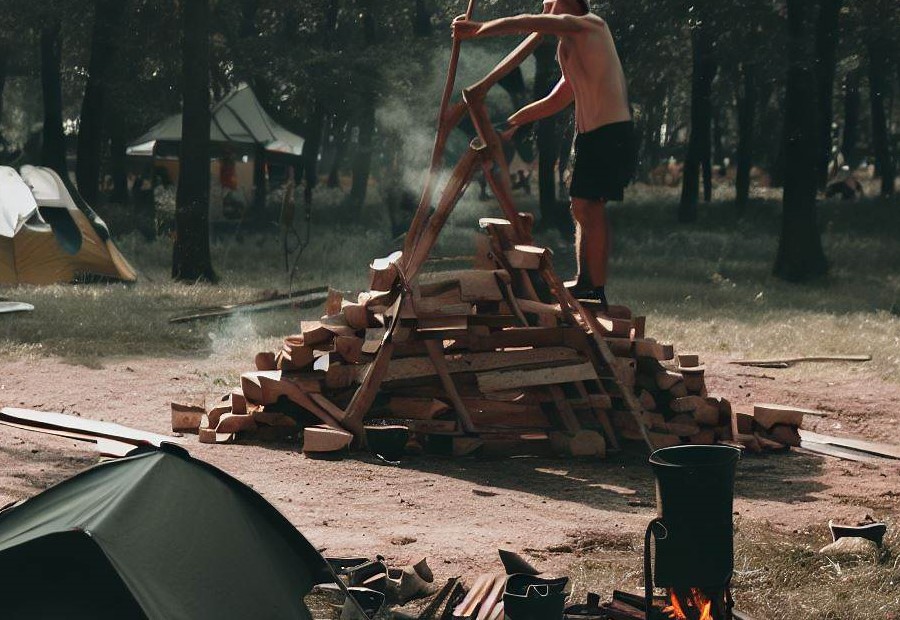
When it comes to building a campsite, the key is finding the perfect location and setting up tents and shelters effectively. In this section, we’ll dive into the crucial aspects of choosing the right location, ensuring a comfortable and secure spot for your outdoor adventure. We’ll also explore the art of setting up tents and shelters, providing you with the essential skills to create a cozy and functional campsite in the great outdoors.
Choosing the Right Location
Choosing the Right Location for your camping adventure is crucial to ensure a comfortable and enjoyable experience. Keep these factors in mind when selecting a spot:
- Consider the proximity to water sources. It’s important to choose a location that is close to a water source such as a river or lake. This will make it easier for you to access water for cooking, cleaning, and drinking.
- Look for an elevated spot. Choosing a location that is slightly elevated can help prevent flooding during rainfall. It also offers better views and may provide better airflow to keep you cool during hot weather.
- Check for level ground. Make sure the area you choose is relatively flat and free from any large rocks or roots. This will make pitching your tents and setting up your campsite much easier and more comfortable.
- Consider the availability of shade. Look for a location that has some natural shade from trees or other structures. This will provide relief from the sun during the day and can help keep your camping area cooler.
- Avoid areas with potential hazards. Stay away from locations that are prone to flooding, have a high fire risk, or are near dangerous wildlife habitats. Your safety should always come first when choosing a campsite.
And don’t forget to consider your personal preferences and the activities you plan to engage in during your trip. Happy camping!
Setting Up Tents and Shelter
Setting up tents and shelter is an essential step in camping that ensures a comfortable and safe experience in the outdoors. Here are the steps to follow:
1. Choose a suitable location for your campsite. Look for level ground, away from hazards like dead trees or rocks that could potentially fall.
2. Lay out a groundsheet or tarp to protect the floor of your tent from moisture and sharp objects.
3. Unfold and assemble your tent according to the instructions provided. Make sure all the poles are properly connected and secure.
4. Place the tent on top of the groundsheet or tarp and align it with the chosen location.
5. Stake down the corners of the tent to keep it secured to the ground. Use sturdy tent stakes and hammer them into the ground at a slight angle.
6. Tightly pull the rainfly over the tent and secure it with the provided clips or straps. This will provide protection from rain or strong wind.
7. If the weather is dry, you may choose to leave the rainfly off for better ventilation and stargazing.
8. Inside the tent, arrange your sleeping bags, sleeping pads, and any other camping gear to create a comfortable and organized space.
9. For additional shelter, you can set up tarps or a dining canopy nearby to provide a communal area to relax or cook.
By following these steps, you can ensure that your tent and shelter are properly set up, providing you with a cozy and secure place to rest during your outdoor adventure.
Fire Building and Camp Cooking
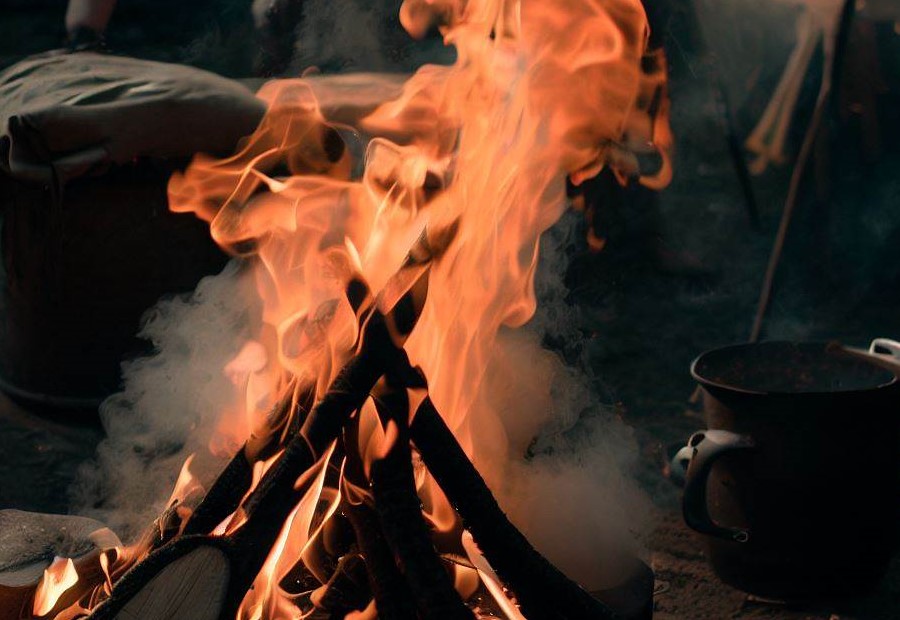
If you’re venturing into the great outdoors, one essential skill you need is mastering fire building and camp cooking. In this section, we’ll dive into the fascinating world of creating and maintaining campfires, as well as the art of cooking over an open flame. We’ll also explore the convenience of using camp stoves and cookware to whip up delicious meals for your outdoor adventures. Get ready to unlock your inner outdoor chef and satisfy your taste buds amidst nature’s beauty.
Building and Maintaining a Campfire
Building and maintaining a campfire is an essential skill for any outdoor adventure.
- Gather firewood: Start by collecting dry sticks, twigs, and branches. Look for dead wood on the ground, avoiding green or moist wood.
- Clear the area: Ensure that the fire pit is clear of any debris or flammable materials. Create a perimeter around the fire pit by removing leaves, grass, or other combustible items.
- Arrange the wood: Begin by placing a few larger pieces of wood at the base, forming a stable structure. Then, layer smaller sticks and twigs on top of the base wood, leaving enough space for air circulation.
- Ignite the fire: Use a lighter, matches, or Firestarter to ignite the tinder and small twigs. Blow gently on the flame to help it grow.
- Feed and maintain the fire: Gradually add larger pieces of wood to keep the fire going. Place logs in a crisscross pattern to allow for airflow. Remember to maintain a safe distance from the fire.
- Monitor and control the fire: Keep an eye on the fire at all times. Extinguish sparks or embers that may escape the fire pit. Use a bucket of water or a shovel to put out the fire when done.
Did you know that building a campfire can provide warmth, light, and a sense of community while camping? It also allows for cooking meals and creates a cozy atmosphere in the great outdoors.
Cooking Over an Open Fire
When it comes to cooking over an open fire while camping, there are several essential steps to follow:
- Gather firewood: Collect dry and seasoned firewood to ensure a stable and long-lasting fire.
- Clear the cooking area: Remove any debris or flammable materials from the area surrounding the fire pit.
- Build and light the fire: Arrange the firewood in a pile or teepee shape and use kindling or fire starters to ignite the fire.
- Wait for the fire to reach ideal cooking conditions: Allow the flames to die down and the wood to turn into hot coals, providing a consistent heat source for cooking.
- Prepare the cooking equipment: Clean and oil any cooking grates or utensils to prevent sticking.
- Cook over the fire: Place your food directly on the cooking grate or use a cast iron skillet or Dutch oven for more complex meals.
- Monitor the cooking process: Watch the food closely to prevent burning or undercooking. Adjust the distance from the fire to control the temperature.
- Rotate and flip the food: Turn the food regularly to ensure even cooking and prevent one side from charring too much.
- Use a meat thermometer: Check the internal temperature of meat to ensure it reaches a safe level for consumption.
- Let the fire burn out: Once you finish cooking, carefully extinguish the fire by dousing it with water and ensuring there are no embers left.
Remember to follow campfire safety guidelines and adhere to any specific rules or restrictions set by the campground you are visiting. Cooking over an open fire can be a rewarding and enjoyable camping experience.
Using Camp Stoves and Cookware
When it comes to outdoor adventures and camping, using camp stoves and cookware is essential for preparing meals and enjoying the experience. Here are some important points to keep in mind:
- Stove selection: It is crucial to choose a camp stove that suits your needs and preferences. There are various types available, including propane stoves, liquid fuel stoves, and wood-burning stoves.
- Portability: When selecting a camp stove, consider its weight and size. Look for lightweight and compact options that are easy to carry and set up. This will make transportation and storage more convenient during your outdoor adventure.
- Cookware compatibility: Make sure that your cookware is compatible with your chosen camp stove. Many stoves have specific requirements for pot or pan size and material.
- Fuel source: Take into account the availability of fuel sources in the camping area. Choose a stove that uses a fuel type that is easy to find and replenish, such as propane canisters or liquid fuel bottles.
- Efficiency and power: Look for a camp stove that offers efficient and powerful heat output. This will allow you to cook your meals quickly and effectively, saving fuel and time.
Using camp stoves and cookware adds convenience, efficiency, and versatility to your camping experience. It enables you to enjoy hot meals and beverages while immersing yourself in the great outdoors.
Fun Fact: Camp stoves have come a long way in their development. The first portable gas stove was invented by James Sharp in 1834. His invention utilized a small gas burner that could be used for cooking during outdoor adventures. Since then, advancements in technology have led to more efficient and compact camp stoves, making outdoor cooking easier than ever before.
Navigating in the Outdoors
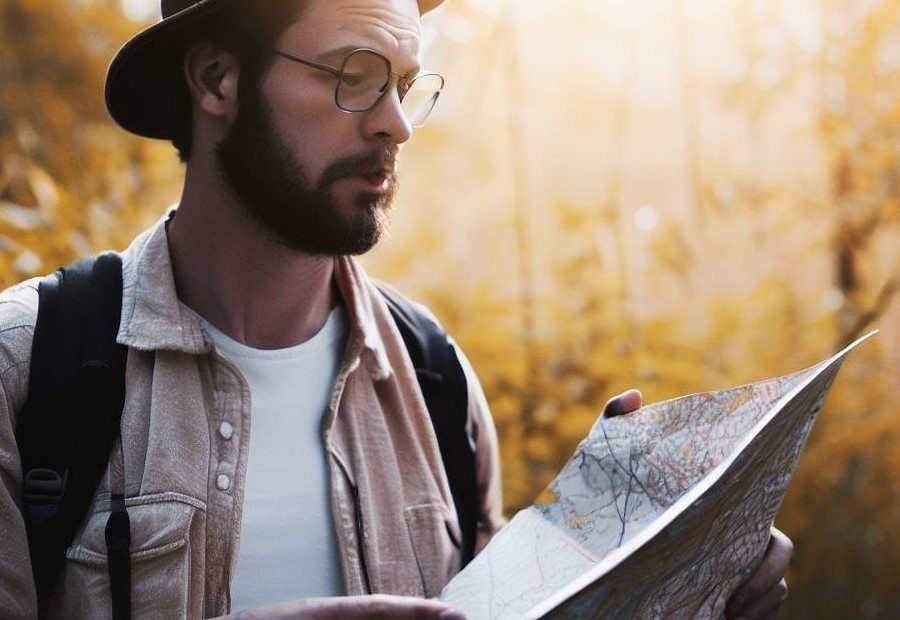
When venturing into the great outdoors, it’s crucial to have the skills to navigate your way through nature’s wonders. In this section, we’ll uncover the art of navigating in the outdoors, where we’ll delve into essential techniques like using compass and map, decoding landmarks and natural signs, and following trail markers. So, get ready to unlock the secrets of orientation and chart a course to unforgettable adventures!
Using a Compass and Map
When using a compass and map, you can effectively navigate in the outdoors and ensure you stay on track and reach your destination safely. Here is a step-by-step guide on how to use a compass and map:
- Start by aligning the compass with the map. Place the compass on the map so that the edge of the baseplate aligns with your starting point and your destination.
- Rotate the compass housing. While keeping the baseplate steady, rotate the housing until the orienting lines on the baseplate align with the map’s north-south grid lines.
- Hold the compass level. Ensure that the compass is held flat and level, making sure the needle is floating freely.
- Turn the compass. Rotate your entire body, not just the compass, until the needle is aligned with the orienting arrow inside the compass housing.
- Read the bearing. Look at the degree markings on the compass housing to determine the bearing you need to follow. Note the direction the arrow points to.
- Hold the compass in front of you. While keeping the compass level and steady, hold it in front of you with the direction of travel arrow pointing away from you.
- Follow the bearing. Move in the direction of the arrow, using the landscape features on the map to navigate and confirm your location.
- Periodically recheck your bearing. As you progress, periodically recheck your bearing to ensure you are still on the right path.
By using a compass and map, you can confidently navigate the outdoors and reach your destination with ease.
Reading Landmarks and Natural Signs
Reading landmarks and natural signs is a crucial skill for navigating in the outdoors. By observing and interpreting the environment, you can determine your location and find your way to your destination. Some important aspects to consider when reading landmarks and natural signs are:
- Recognizing distinctive features: Look for prominent landmarks such as mountains, rock formations, or bodies of water. These can serve as reference points to orient yourself and track your progress.
- Understanding natural signs: Pay attention to natural signs like tree growth patterns, animal tracks, or changes in vegetation. These can indicate the presence of water sources, trail paths, or potential hazards.
- Observing celestial cues: The sun, moon, and stars can provide valuable information about time, direction, and navigation. Learn to identify basic celestial cues, such as the movement of the sun throughout the day or the position of Polaris (the North Star) at night.
- Utilizing maps and compasses: Combine the knowledge of reading landmarks and natural signs with map reading and compass skills. Use topographic maps to identify key features and mark your route and use compasses to determine directions based on landmark observations.
- Practicing and refining your skills: Reading landmarks and natural signs requires practice and experience. Regularly go on hikes or outdoor adventures where you can actively apply and improve your navigation skills.
Remember, always plan and prepare for your outdoor activities in advance and consider taking a navigation course or consulting experienced hikers or outdoor enthusiasts for guidance. With time and practice, you will become more proficient in reading landmarks and natural signs, enhancing your ability to explore and enjoy the outdoors safely.
Following Trail Markers
When hiking or exploring in the outdoors, following trail markers is crucial for navigation and safety. It is important to look for trail signs, which can come in various forms such as painted blazes on trees, cairns, or trail signs. Keeping a lookout for these markers will help you stay on the right path.
- Look for trail signs: Trail markers are an essential part of hiking or exploring in the outdoors. They can be in the form of painted blazes on trees, cairns, or trail signs. Make sure to pay attention to these markers to ensure you are on the right path.
- Pay attention to colors and shapes: Different trails are marked with different colors or shapes. It is important to familiarize yourself with the trail map and the corresponding markers to ensure you are following the correct route.
- Observe the direction of the markers: Trail markers are strategically placed to guide hikers in the right direction. If you consistently see markers pointing in a certain direction, it serves as a good indication that you are on the right path.
- Continue to look for markers: While some trails may have markers at regular intervals, others may have fewer markers. It is crucial to pay close attention to any changes in the frequency or visibility of markers to avoid getting off track.
- Use additional navigation tools: While trail markers are a valuable resource, it is always a good idea to supplement them with other navigation tools like a compass or GPS device. These additional tools can help ensure you are following the intended route.
By following trail markers and staying aware of your surroundings, you can navigate through the outdoors with confidence and reach your destination safely.
Outdoor Safety and First Aid
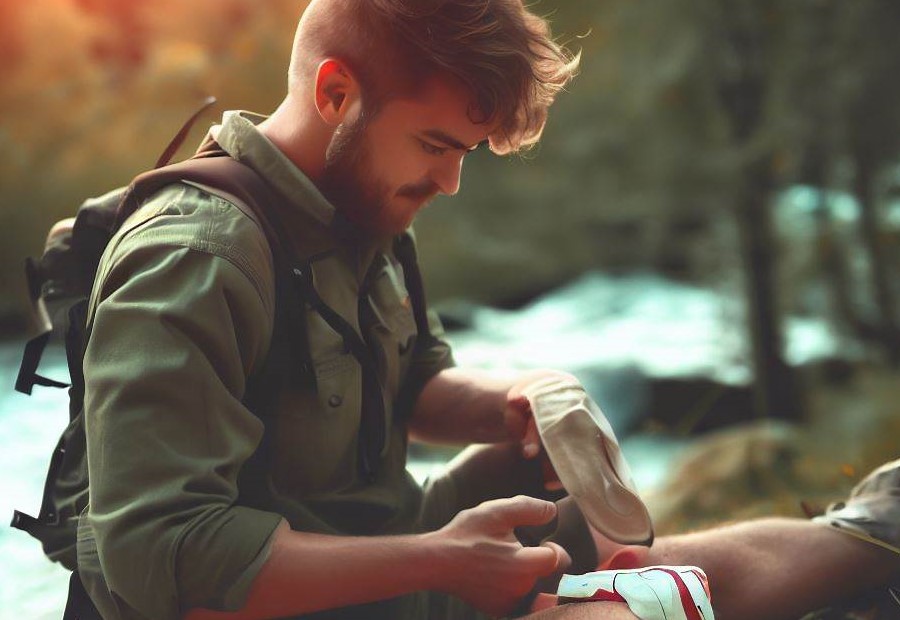
When it comes to outdoor adventures, safety should always be a top priority. In this section, we’ll dive into outdoor safety and first aid, equipping you with the skills and knowledge to handle any situation that may arise. From basic first aid skills to identifying and avoiding outdoor hazards, as well as dealing with common injuries and ailments, we’ve got you covered. So, lace up your boots and join us on this adventure in ensuring your safety in the great outdoors!
Basic First Aid Skills
When it comes to outdoor adventures, having basic first aid skills is essential for your safety and the safety of others. Here are some important steps to remember:
- Assess the situation: Evaluate the nature and severity of the injury or ailment.
- Ensure personal safety: Before administering first aid, make sure the area is safe.
- Control bleeding: Apply pressure to the wound using a clean cloth or bandage.
- Treat burns: For minor burns, cool the affected area with cold water, and apply a sterile dressing. Seek medical help for serious burns.
- Manage fractures and sprains: Immobilize the injured limb using splints, slings, or wraps made from available materials.
- Provide CPR and rescue breathing: Perform cardiopulmonary resuscitation (CPR) and rescue breathing when necessary.
- Administer medications: If authorized and trained, provide necessary medications such as epinephrine for severe allergic reactions.
- Treat insect bites and stings: Remove stingers, clean the affected area, and apply ice or antihistamine creams for relief.
- Manage heat and cold-related illness: Take appropriate actions to prevent and treat heat exhaustion, heatstroke, hypothermia, and frostbite.
- Call for professional help: Contact emergency services for serious injuries or conditions beyond your ability to handle.
Remember, being prepared and having these basic first aid skills can make a significant difference in outdoor emergencies. Stay safe and enjoy your adventure!
Identifying and Avoiding Outdoor Hazards
When planning a camping trip, it is essential to incorporate steps for identifying and avoiding outdoor hazards. These precautions will ensure a safe and enjoyable experience:
- Research: Before embarking on your trip, conduct thorough research on the camping area. It is crucial to be aware of any specific hazards such as wildlife, poisonous plants, or extreme weather conditions.
- Inspect the campsite: Upon arrival at the campsite, make sure to carefully inspect the surroundings for potential hazards. Be on the lookout for uneven terrain, sharp objects, or unstable trees.
- Identify poisonous plants: Acquaint yourself with the appearance of poisonous plants like poison ivy, poison oak, and stinging nettles. Educate your camping companions on how to recognize and avoid them as well.
- Be cautious around wildlife: Maintaining a safe distance from wild animals is essential. Never approach or feed them and secure your food properly to prevent attracting animals to your campsite.
- Stay hydrated: It is important to keep yourself hydrated, especially in hot or high-altitude environments. Ensure you have an adequate supply of water for the duration of your camping trip.
- Protect yourself from the sun: Apply sunscreen, wear a hat, and use sunglasses to shield your skin and eyes from harmful UV rays. Seek shade during the hottest hours of the day.
- Stay updated on weather conditions: Regularly monitor weather forecasts before and during your camping trip. Be prepared to seek shelter or adjust your plans if severe weather is anticipated.
Dealing with Common Outdoor Injuries and Ailments
When embarking on an outdoor adventure, it’s important to be prepared for dealing with common outdoor injuries and ailments. Here are some essential skills for dealing with such situations:
- Basic first aid: Learn how to treat cuts, scrapes, and burns with proper cleaning, dressing, and bandaging techniques.
- Recognizing fractures: Be able to identify signs of broken bones and provide initial stabilization until professional medical help is available.
- Dealing with sprains and strains: Understand the R.I.C.E. (rest, ice, compression, and elevation) method to alleviate pain and reduce swelling.
- Treating insect bites or stings: Know how to properly remove stingers, apply antihistamines or creams, and identify allergic reactions.
Knot Tying and Rope Work

Mastering the art of knot tying and rope work is the key to unlocking a world of endless possibilities during your outdoor adventures. In this section, we will dive into essential knots for camping that will aid you in various situations. Additionally, we’ll explore how to utilize ropes for shelter, gear, and safety, opening up a realm of innovative solutions. Get ready to enhance your camping skills and harness the power of ropes to conquer the great outdoors!
Essential Knots for Camping
When it comes to camping, knowing how to tie essential knots is crucial for various tasks and situations. Here is a list of essential knots for camping:
- Figure-eight knot: The figure-eight knot is essential for camping as it stops the end of a rope from unraveling. It is versatile and easy to tie and untie, making it useful for various camping needs.
- Clove hitch: The clove hitch is important for securing a rope to a post or pole during camping. It is quick to tie and can be easily adjusted or undone as needed.
- Taut-line hitch: The taut-line hitch knot is crucial for securing tent guy lines while camping. It allows for easy adjustment to keep the tent taut and stable, even in changing weather conditions.
- Bowline: The bowline is an essential knot for camping as it creates a loop that will not slip or come undone. It is useful for securing a rope to a tree or creating a makeshift clothesline.
- Sheet bend: The sheet bend is handy for camping as it is used to join two ropes of different thicknesses or materials. It is useful for creating longer ropes or repairing damaged ones.
Mastering these essential knots will greatly enhance your camping experience and ensure you are well-prepared for any outdoor adventure. Remember to practice tying these knots before your camping trip to familiarize yourself with their techniques and ensure you can tie them confidently and efficiently.
Using Ropes for Shelter, Gear, and Safety
When camping, using ropes for shelter, gear, and safety is essential. Here are some ways you can effectively utilize ropes:
- Using ropes for shelter: Ropes are used to secure the tent and keep it stable in windy conditions.
- Using ropes for gear: Ropes can be tied to trees or other sturdy structures to create a shelter using a tarp or camping hammock.
- Using ropes for safety: Ropes can be used to hoist food and other scented items high off the ground, ensuring they’re safe from animals.
- Using ropes for gear: Ropes can be used to secure gear to backpacks or to create a clothesline for drying wet items.
- Using ropes for safety: Ropes can be used for constructing splints or creating a makeshift stretcher in case of injuries.
Using ropes in camping not only enhances safety but also cultivates proficiency in outdoor skills. Being able to effectively use ropes allows for better campsite organization and improves the overall camping experience. Learning different knots, such as the bowline and the clove hitch, will boost your confidence in handling various tasks.
In fact, during my last camping trip, I encountered a situation where I had to use ropes for both shelter and safety. While hiking, my tent got damaged due to strong winds. I quickly assessed the situation and used ropes to secure the damaged parts, preventing further damage and ensuring the safety of the tent. This experience highlighted the importance of having knowledge and skills in using ropes for shelter, gear, and safety while camping.
Campsite Maintenance and Leave No Trace Principles
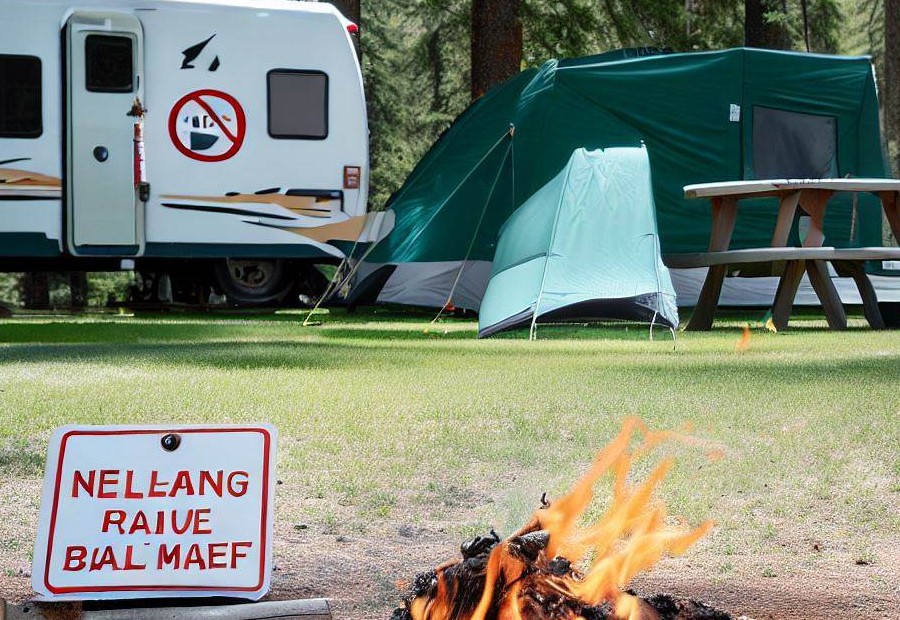
Learn how to maintain your campsite and practice Leave No Trace principles to minimize your impact on the environment. Explore the importance of cleaning and organizing your campsite, showing respect for wildlife and nature, and leaving no trace of your presence. Discover practical tips and techniques to ensure a sustainable and responsible outdoor adventure. Let’s dive into campsite maintenance and the principles that will help preserve the beauty of the wilderness for future generations.
Cleaning and Organizing the Campsite
When it comes to cleaning and organizing the campsite, there are several important steps to follow:
- Start by packing up any trash and disposing of it properly. Use designated garbage bags or bins to ensure proper waste management for cleaning and organizing the campsite.
- Next, gather all camping gear and equipment, such as tents, sleeping bags, and cooking utensils. Clean and dry them thoroughly before storing them in their respective bags or containers for cleaning and organizing the campsite.
- Remove any food remnants or scraps from the cooking area. Properly clean cooking utensils and dishes using biodegradable soap and hot water. Rinse them thoroughly during the process of cleaning and organizing the campsite.
- Sweep and clear the campsite of any debris or fallen leaves to maintain cleanliness and prevent potential hazards while cleaning and organizing the campsite.
- Ensure that campfire pits or fire rings are completely extinguished before leaving the campsite. Use water and dirt to put out the fire and stir the ashes to make sure there are no remaining embers as part of cleaning and organizing the campsite.
By following these steps, you can leave the campsite clean and organized for the next campers after cleaning and organizing the campsite.
Respecting Wildlife and Nature
Respecting wildlife and nature is of utmost importance when camping outdoors in order to preserve the natural environment and ensure the well-being of wildlife species.
- Keep a respectful distance: It is crucial to maintain a safe distance from wildlife in order to avoid disturbing their natural behavior or causing them stress. By observing animals from a distance using binoculars or a camera lens, you can get a closer view without intruding.
- Follow designated trails: Stick to the designated trails to minimize the impact on vegetation and sensitive habitats. Avoid stepping on plants or disturbing fragile ecosystems.
- Do not feed wildlife: It is strongly advised not to feed wildlife as this can disrupt their natural foraging habits and create a dependence on human food. Additionally, it can lead to aggressive behavior. Instead, appreciate wildlife from a distance and allow them to find their own food sources.
- Properly dispose of waste: Be responsible and dispose of waste and trash in designated garbage bins or take it with you when leaving the campsite. Make sure no food waste is left behind as it can attract wildlife and disrupt their natural patterns.
- Respect noise levels: Keep noise levels to a minimum to avoid disturbing the natural soundscape and wildlife habitats. Loud noises can disrupt the breeding, feeding, and resting patterns of animals.
- Leave natural objects undisturbed: Refrain from picking flowers, collecting rocks, or disturbing any natural objects. These objects play an important role in the ecosystem and should be left untouched for others to enjoy.
By showing respect for wildlife and nature, campers can actively contribute to preserving the natural environment and promoting sustainable camping practices.
Minimizing Impact and Leaving No Trace
Minimizing impact and leaving no trace is crucial for preserving the natural environment while enjoying outdoor adventures. Here are some steps to consider:
- Dispose of waste properly: Pack out all trash and waste, including food scraps. Avoid leaving any trace of your presence.
- Respect wildlife: Observe animals from a distance and never feed them. Keep food securely stored to prevent animals from becoming dependent on human food.
- Stay on designated trails: Stick to established paths and avoid trampling on vegetation or creating new trails.
- Leave natural objects untouched: Refrain from disturbing plants, rocks, or natural features. Leave them for others to enjoy.
- Minimize campfire impact: Use existing fire rings or designated fire areas. Keep fires small, fully extinguish them, and never leave them unattended.
- Be mindful of noise: Keep noise levels low to minimize disturbance to wildlife and other campers.
- Respect private property and regulations: Obtain necessary permits and follow all rules and guidelines set by park authorities or landowners.
To truly leave no trace and minimize impact, it’s important to educate others and spread awareness of these principles. By practicing these steps, we can help protect our natural surroundings for future generations.
Frequently Asked Questions
What are the basic camping skills I need for an outdoor adventure?
Some basic camping skills you need for an outdoor adventure include setting up a shelter, starting a fire, cooking meals, using and caring for knives, reading a map, and basic first aid skills.
How can I learn the lost art of knot tying for camping?
You can learn the lost art of knot tying for camping by researching and practicing the most useful knots, such as the square knot, taut line hitch, and clove hitch. There are various online resources and classes that can provide a guide on how to properly tie these knots.
What are some fire starting hacks for camping?
Some fire starting hacks for camping include using dryer lint as tinder, using flint and steel to create sparks, and using homemade fire starters made from pine cones and wax. It’s important to avoid using lighter fluid or other accelerants that can be dangerous.
What should I wear when camping?
When camping, it is important to dress appropriately for the weather and outdoor activities. Wear layers of clothing to regulate body temperature and protect against the elements. Choose moisture-wicking and quick-drying materials to keep you comfortable. Additionally, wear sturdy shoes or boots that provide good traction and support.
How do I practice proper outdoor cooking skills while camping?
To practice proper outdoor cooking skills while camping, bring along a portable camping stove or use a campfire. Use cooking utensils specifically designed for outdoor use and follow safe food preparation guidelines. Additionally, be mindful of Leave No Trace practices and clean up any cooking residue.
How can I ensure I have a safe and enjoyable wild camping experience?
To ensure a safe and enjoyable wild camping experience, it is important to familiarize yourself with the wild camping code of conduct, learn essential survival skills such as building a fire and administering first aid, and pack appropriate equipment, including a first aid kit and water purifier. Inform someone of your plans and follow proper safety precautions when interacting with wildlife.

